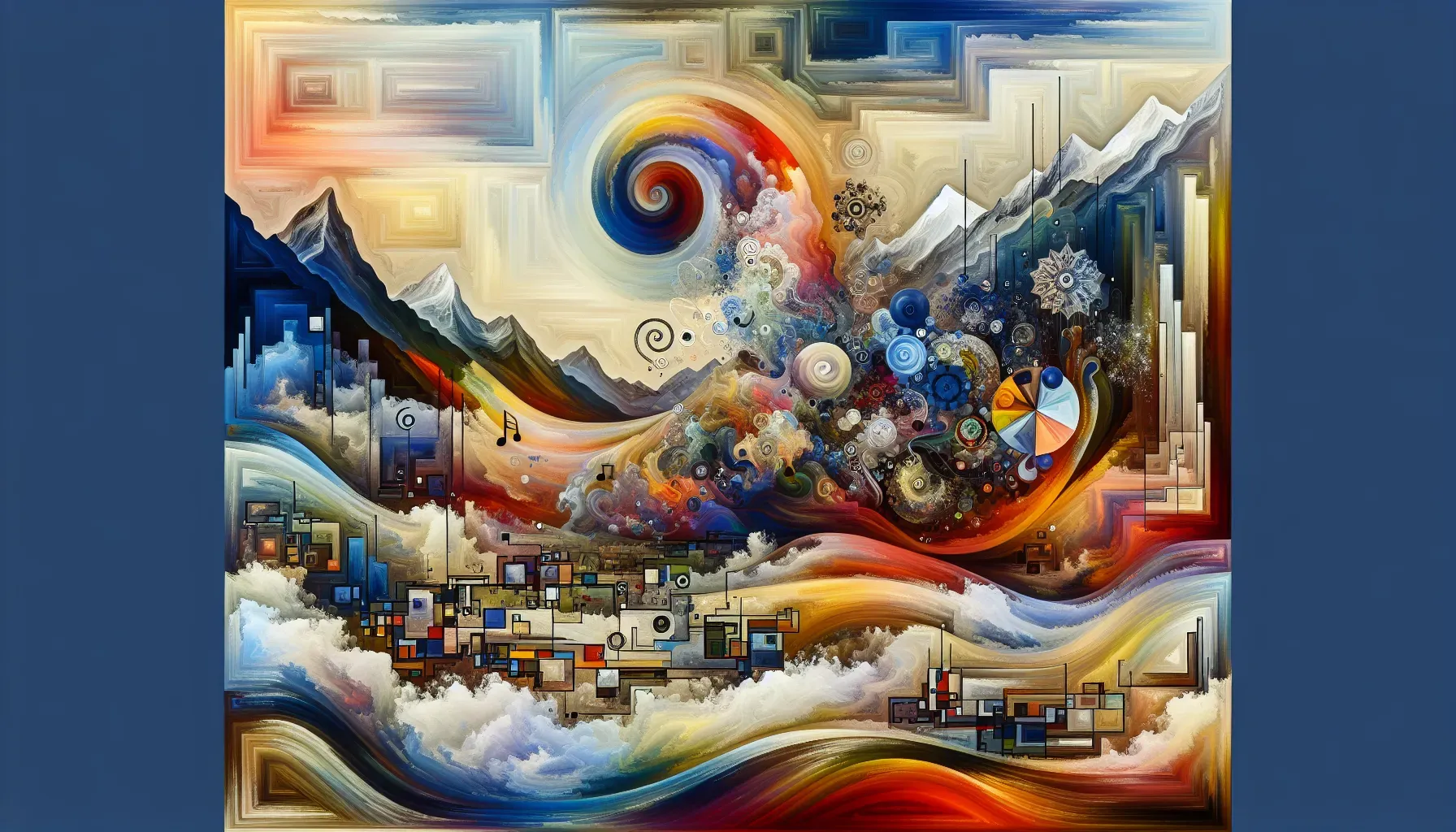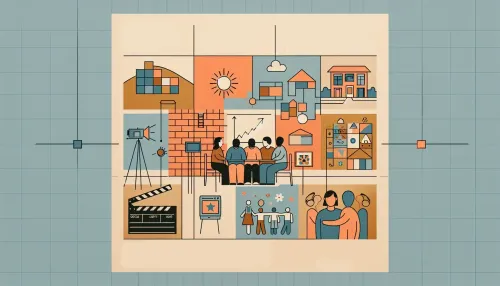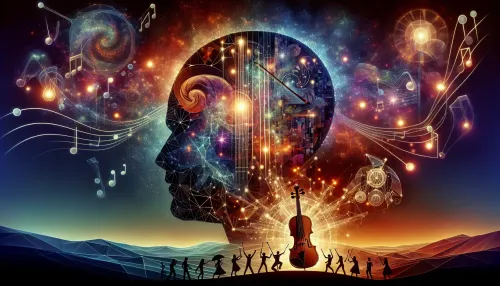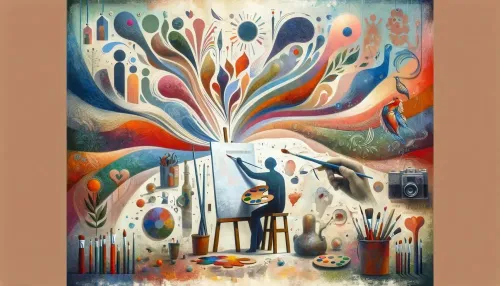Creative Alliances: How Art and Science Converge to Support Autistic Expression

Here at the HorizonsMind Blog, we've witnessed a compelling transformation in the realm of therapies for autistic children art and science uniting. It's a fusion that bodes well for young minds navigating their way through the spectrum of autism. Recent trends show artists and therapists forming painting partnerships to unlock new avenues for communication and self-expression.
Painting Partnerships: Art and Therapy for Autistic Expression
Art therapy, embellished with evidence-based practices, has begun to flourish. Experts suggest that the collaboration between creative professionals and psychologists galvanizes a child’s ability to connect non-verbally. Through strokes of a paintbrush, children who may struggle with conventional forms of communication can articulate their inner worlds.
For instance, consider this scenario: An art therapist introduces watercolors to a child. Initially, it's all about exploring textures and colors. However, with scientific insights on sensory processing disorders that some autistic children experience, the therapist adapts techniques to suit individual needs transforming ordinary painting sessions into personalized therapeutic experiences.
While painting engages fine motor skills and emotional expression, sculpting offers another tactile dimension to artistic therapy. Art programs backed by scientific research create structured yet flexible learning environments conducive to autistic learners' unique abilities.
Sculpting Success: Art Programs and Research for Autism
Consider a program integrating clay sculpting with sensory integration techniques a blend highly praised in specialist circles. As children mold their creations, they concurrently develop a higher tolerance for varied tactile inputs. It's an art-science melange underpinned by neurological studies showing improved motor coordination among participants.
Sculpting success isn’t anecdotal; it's measured through methodical progress tracking. Thus, HorizonsMind Blog commends these dual efforts that leverage artistic potential while grounding them in substantiated outcomes.
Moving from visual to auditory art forms, melodic mergers between music therapists and autism researchers have struck a chord globally. The intrinsic patterns and structures in music serve as gentle scaffolding for many autistic children grappling with behavioral regulation or social interaction challenges.
A harmonious exchange between the two camps is noticeable; cue-provided learning in music therapy helps improve attention span, while deliberate pauses encourage communicative attempts be it through gestures or vocalizations. These musical interventions are no longer solely based on feel-good experiences but are being intricately designed around cognitive development theories.
Melodic Mergers: Music's Impact on Autism Therapy
Neuroscience research entering the rehearsal room promises a potent mix the right rhythms could potentially rewire neurological pathways.
The integration of technology in educational settings is not new, but when it comes to supporting autistic expression through art, digital advancements are taking center stage. Innovative education models now feature the amalgamation of artistic creativity with tech tools.
For example, drawing apps that allow for undo functions offer less frustration during the creative process, making art-making more pleasurable for those who might find fault more distressing. Likewise, software that simulates different art mediums caters to varied sensory preferences without physical discomfort.
Blending Brushstrokes with Bytes: Technology in Art Education
Within this tech-art landscape, custom-tailored programs consider individual learning profiles recommending specific digital art forms testing not just engagement but also cognitive skills a tactic endorsed by both educators and tech developers involved in autistic education.
Dance therapy has rhythmically stepped into the limelight as another facet of art therapy wherein movement and psychology intertwine to support autistic children. Body language serves as a powerful tool for non-verbal communication a realization that has led dance troupes to collaborate with psychologists in crafting change through choreography.
The synchronization demanded by dance routines encourages cooperation and social synchrony while allowing for individual variations acknowledging that each child's dance is distinct. Informed by psychological insights on kinesthetic learning and balance control, these team-ups underscore movements' therapeutic value as kids find joy in expressing themselves unreservedly.
Choreographing Change: Dance Therapy for Autistic Children
Recognizing that articulating thoughts and feelings can be arduous for some autistic children; hence, there's delight in seeing joint ventures where artisans and speech therapists produce innovative art-based language learning tools. Visual aids created from paintings or storyboards facilitate discussions; meanwhile sculptures serve as tangible dialogue prompts.
These crafted communication tools complement linguistic development strategies, as they provide concrete items children can tangibly relate to words or concepts streamlining language acquisition processes rooted in multimodal pedagogies.
Museums are no longer austere galleries reserved solely for silent contemplation; they have transformed into inclusivity hubs thanks to partnerships with schools designed to cater specifically to autistic children. In step with accommodations requests from parents and educators alike, museums are curating sensory-friendly events dimmed lights, quiet hours and interactive exhibits allowing touch and exploration.
Crafting Communication: Art-Based Language Tools for Autism
But beyond adjustments to physical spaces, museum-school affiliations raise awareness about neurodiversity as they expose all children to inclusive practices an educational stance driven by broader societal benefits heavily underscored by both parties.
Exploration of art-science alliances is the innovative fusion of canvas and code merging artistic talents of autistic individuals with software development projects an area where meticulous attention to detail shines.
Related Article: The Artistic Expression of Autism: Exploring Creativity in Autistic Individuals through Popular Art Forms
Galvanizing Galleries: Museums and Schools for Inclusivity
Programs designed around computer graphics creation or animation involve coding aspects appealing intrinsically to some on the spectrum who find predictable patterns reassuring. Meanwhile others relish in the freedom digital canvases provide a chance to let imaginations roam without physical constraints hampering them.
These initiatives not only empower self-expression but also set up potential pathways toward fulfilling careers blending their distinctive skill sets with ever-growing digital economies an aspect our audience finds particularly inspiring.
Through these multidisciplinary approaches stretching from ateliers' paint-splattered floors up through virtual reality headsets' digitized realms what emerges is a shared landscape where science magnifies arts therapeutic potency and vice versa a synergy heartily championed within every piece penned for HorizonsMind Blog readers curious about the kaleidoscopic world of autistic children.
Frequently Asked Questions
Painting partnerships involve collaboration between artists and therapists to enhance communication and self-expression for autistic children. By integrating art therapy with evidence-based practices, these partnerships help children articulate their feelings through creative expression, making therapy more personalized and effective.
Music therapy aids autistic children by using structured musical patterns to improve behavioral regulation and social interactions. Collaborations between music therapists and researchers create interventions that enhance attention spans and encourage communication through gestures or vocalizations, fostering cognitive development.
Check Out These Related Articles

Embracing Neurodiversity through Art: A Journey into the Creative Minds of Autistic Children

Redefining Perceptions: The Influence of Autistic Personalities in Reality TV Shows and Documentaries

The Harmony of Hurdles: A Violin Prodigy's Journey with Autism
